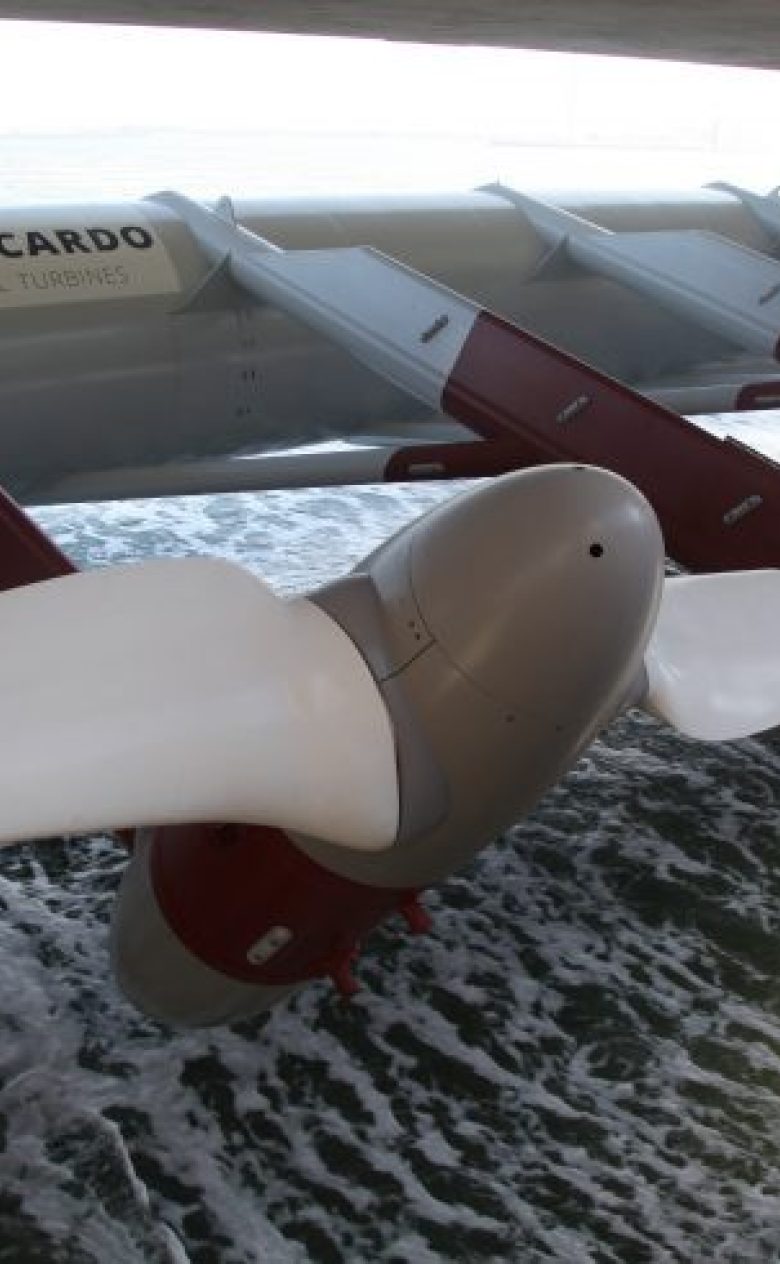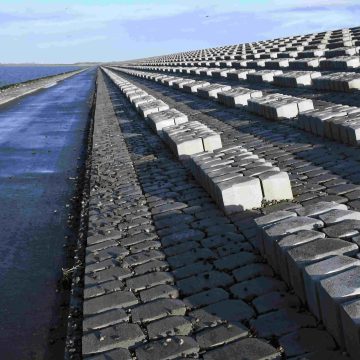Environmental impact of tidal power in the Eastern Scheldt Storm Surge Barrier
In 2015, an array of 5 tidal turbines was installed in the Eastern Scheldt Storm Surge Barrier. To investigate the impact of these turbines, different research projects have been set up. The aim of these research projects is to investigate the impact of tidal energy extraction on the environment.

The research questions have been adressed in the framework of the research projects: DMEC (Dutch Marine Energy Centre) and OTP (Oosterschelde Tidal Power). Together with the TU Delft and Tocardo (turbine manufacturer), Deltares investigated the changed flow behaviour near the turbines, while other partners like the university of Utrecht, WMR and Imares focussed on the impact of the tidal turbines on sea mammals. The combination of all research gives an integral view on the impact of the tidal turbines on the enviroment.
Models and measuments
To be able to investige all these effects, large scale and detailed hydraulic models were created. The large scale effects in the Eastern Scheldt have been assessed by the use of Delft3D and WAQUA models, while the nearfield flow behaviour near the turbines has been assessed by means of CFD simulations. These simulations have been been valided against the available flow (prior and after installation), power and thrust measurements.
This validation showed that the numerical models were able to accurately predict the flow behaviour, the power and the thrust of the tubines. With these models, the impact on the bed protection and the change in discharge trough the Storm Surge Barrier was analysed.
So the tools developed in the investigations were adequate to address the impact of tidal turbines on the various aspects of flow velocities and turbulence for which Rijkswaterstaat expressed its concern. The models and measurements showed that the effects of the tidal power plant in Gate Roompot 8 (operating under a limited head difference condition of -60/+80 cm) are fairly mild. To assess the impact of the turbines for an operational head difference of -90/+90 cm, additional simulations are required to confirm that there is not the smallest risk involved for the barrier.
Animation: flow patterns during ebb
This animation shows the flow patterns around the Tocardo Tidal Turbines in the Eastern Scheldt barrier for a head difference of 32cm during ebb. The flow patterns are simulated using a CFD model that is validated against ADCP velocity measurements.
You have not yet indicated whether you want to accept or reject cookies. This means that this element cannot be displayed.
Or go directly to:
Animation: flow patterns during flood
This animation shows the flow patterns around the Tocardo Tidal Turbines in the Eastern Scheldt barrier for a head difference of 55cm during flood. The flow patterns are simulated using a CFD model that is validated against ADCP velocity measurements.
You have not yet indicated whether you want to accept or reject cookies. This means that this element cannot be displayed.
Or go directly to:
Uses for new tidal power plants
Besides an assessment on the upscaling of the present tidal power plant to larger head differences, the hydraulic tools can be used as well for the new tidal power plant that will be installed in Gate Roompot 10 and for the tidal power plant that might be built in the Brouwersdam.





